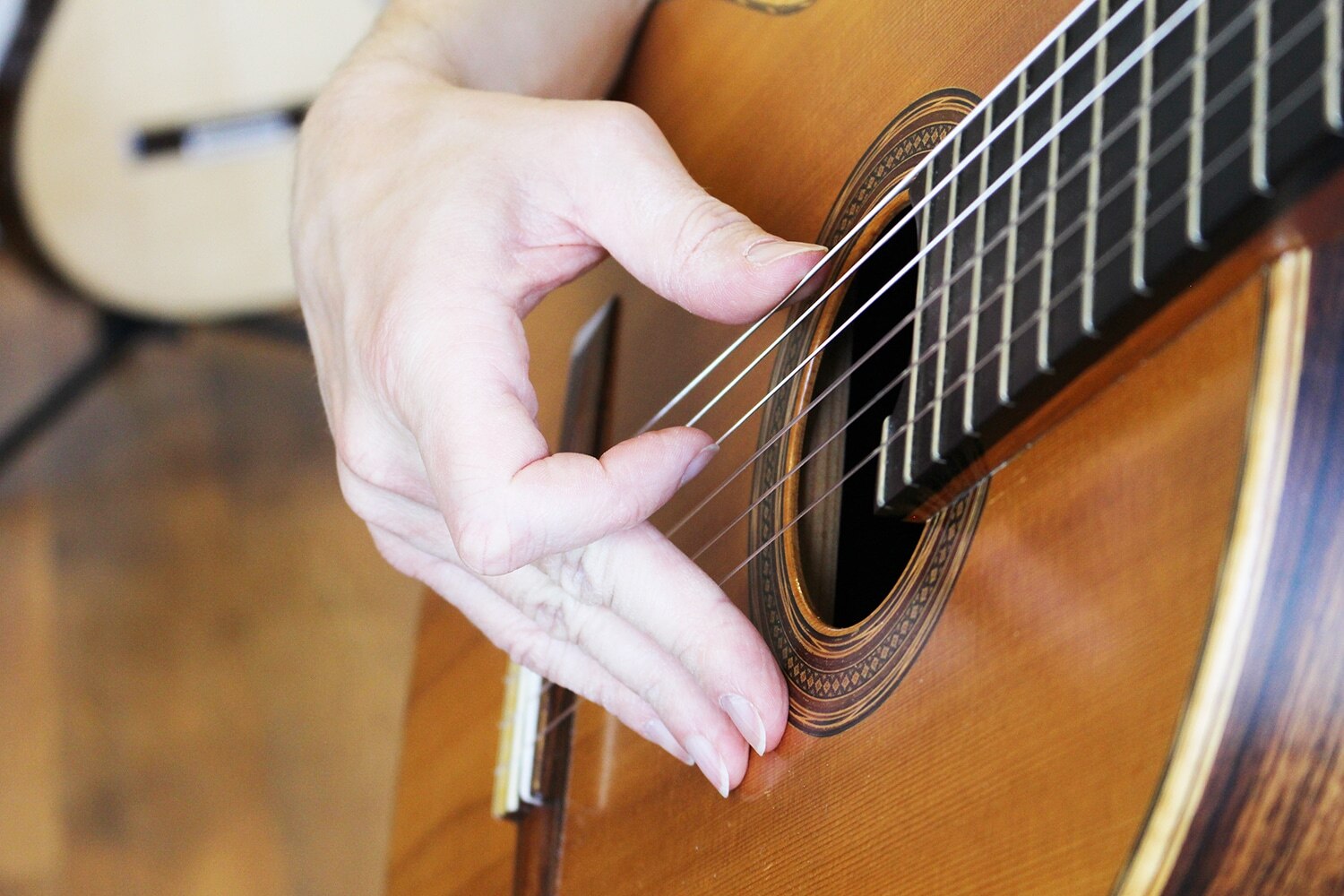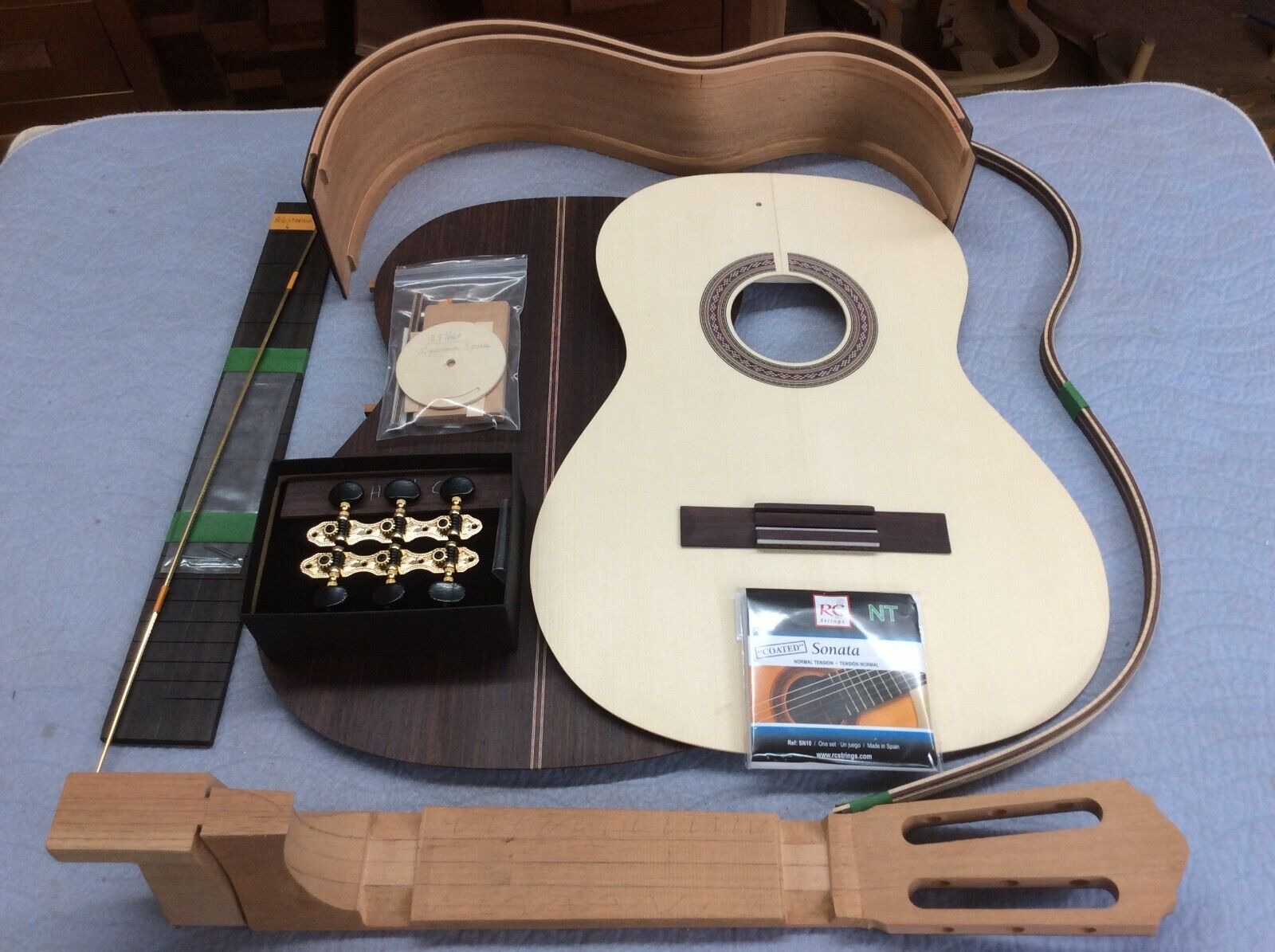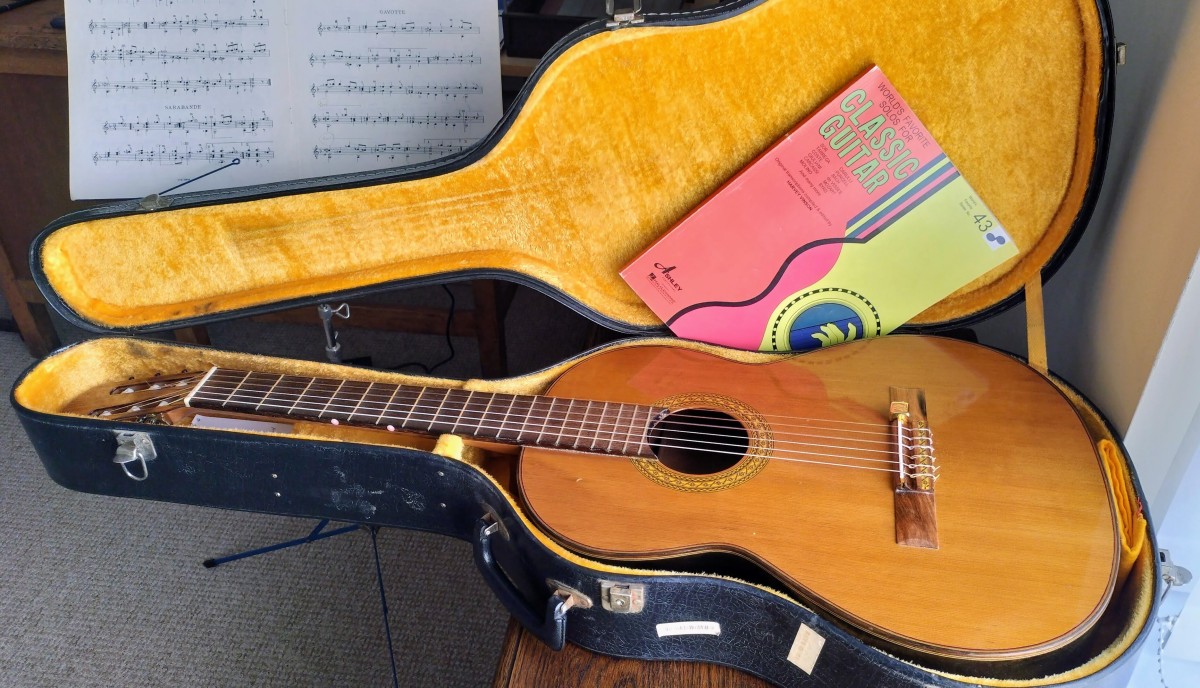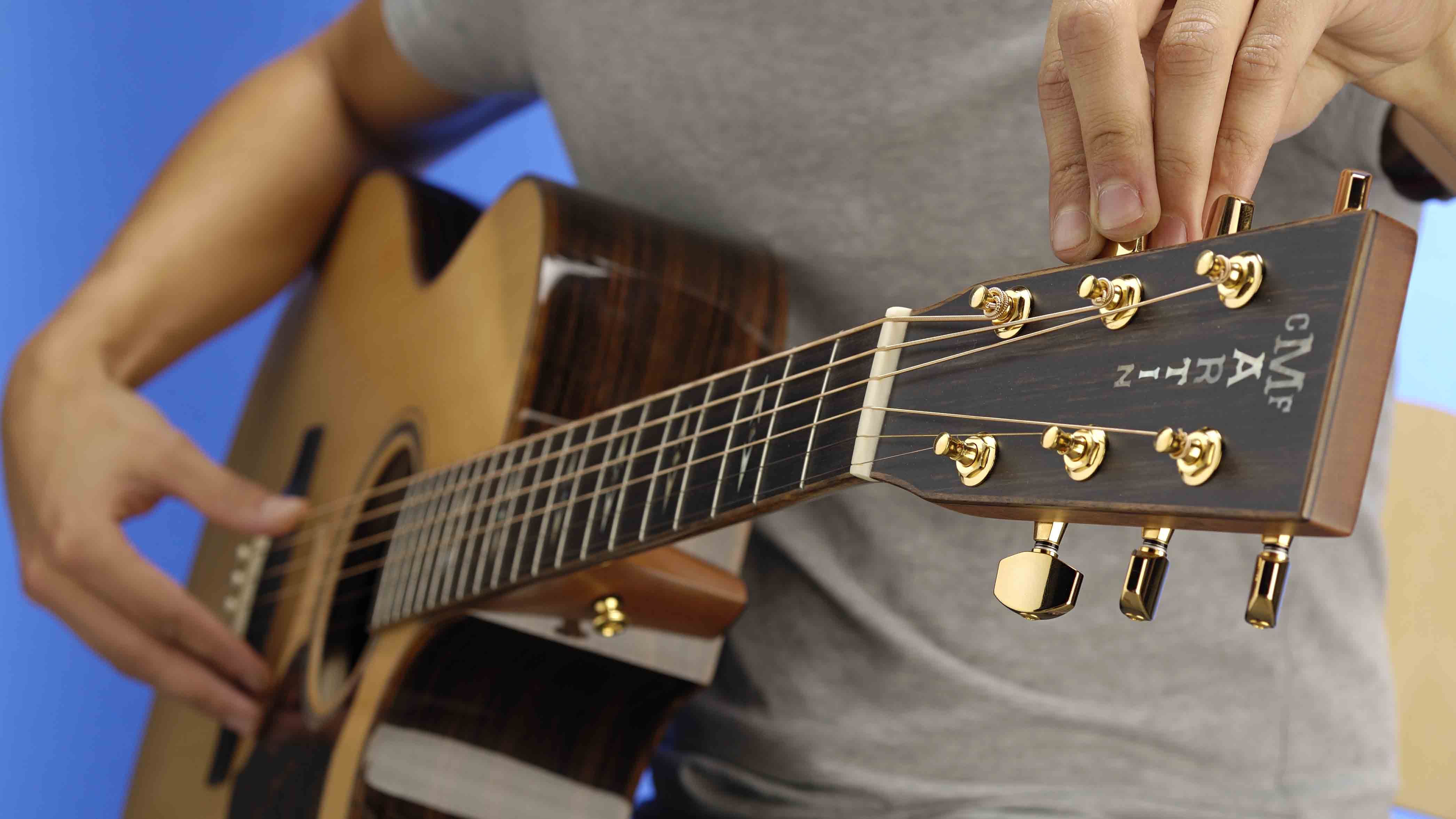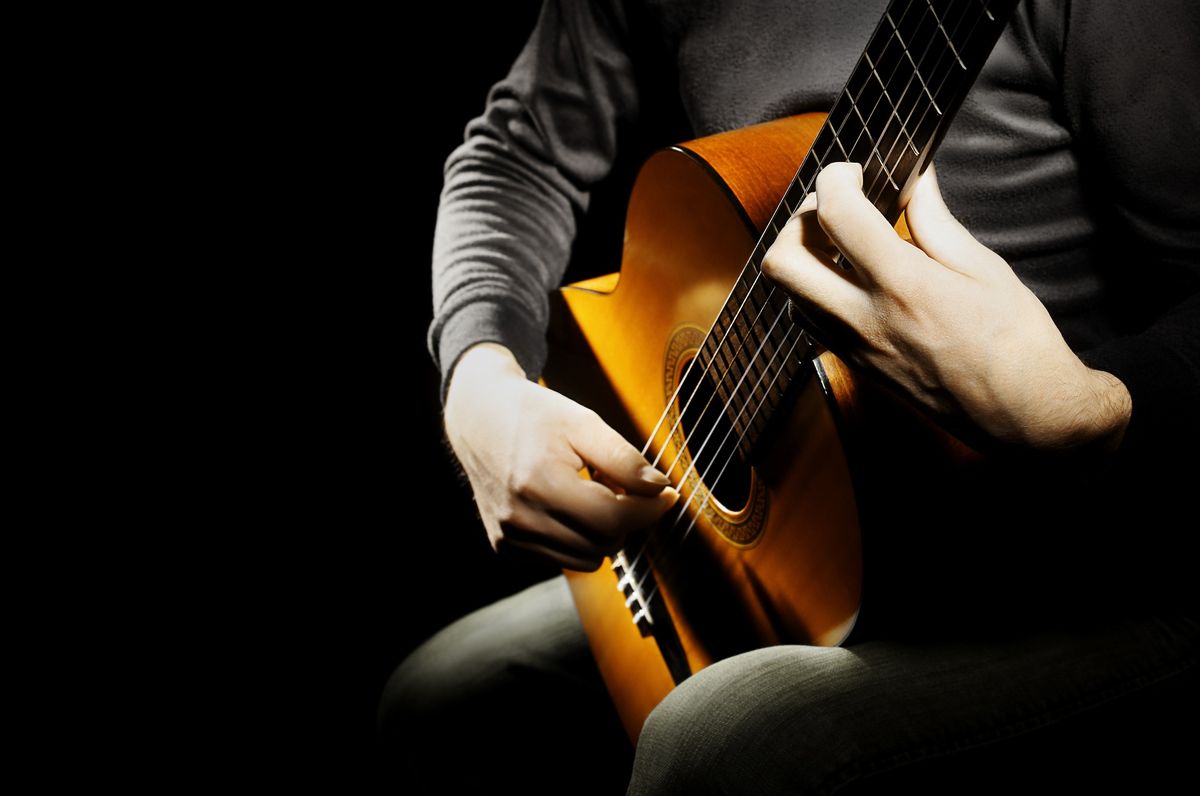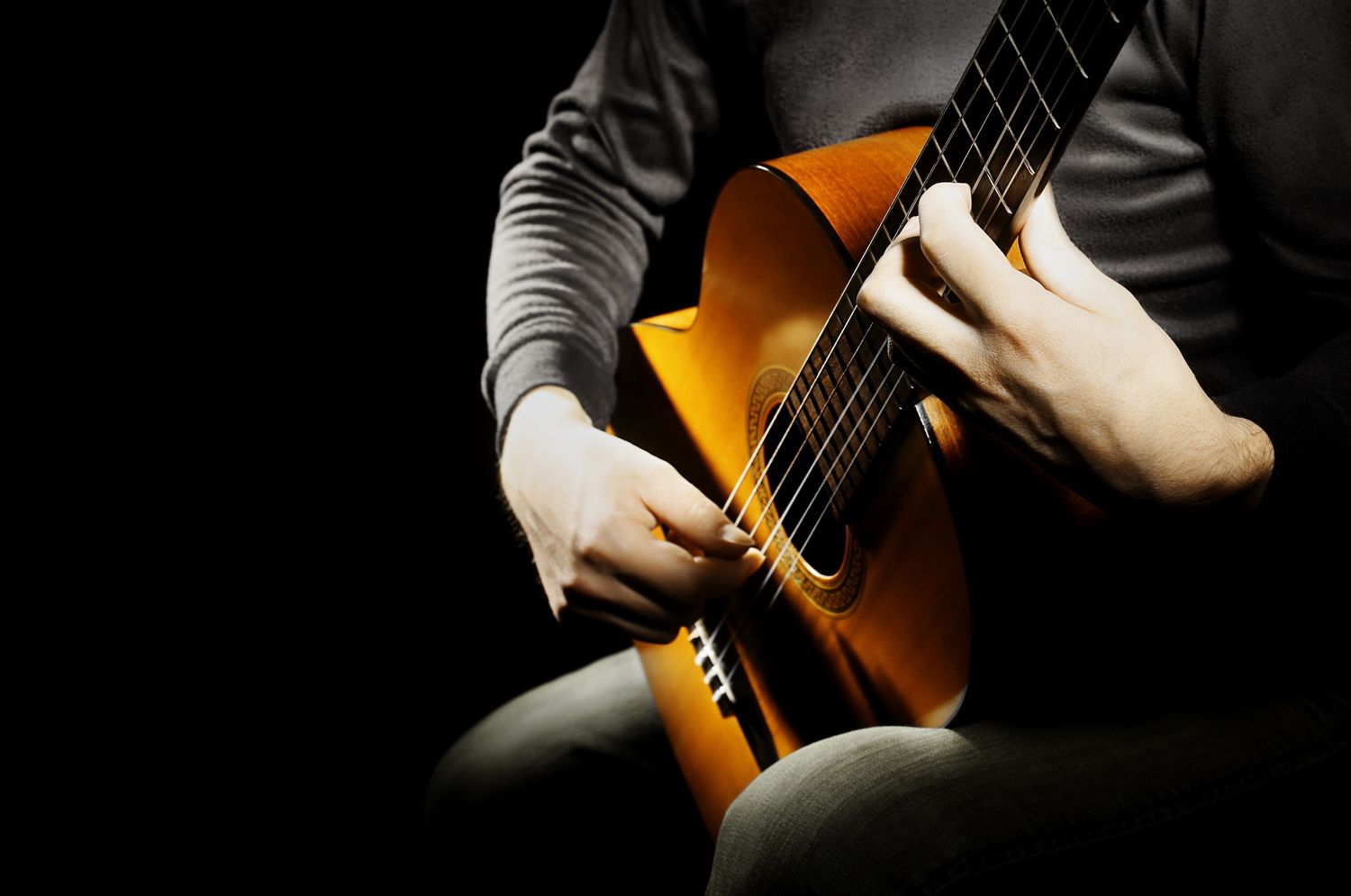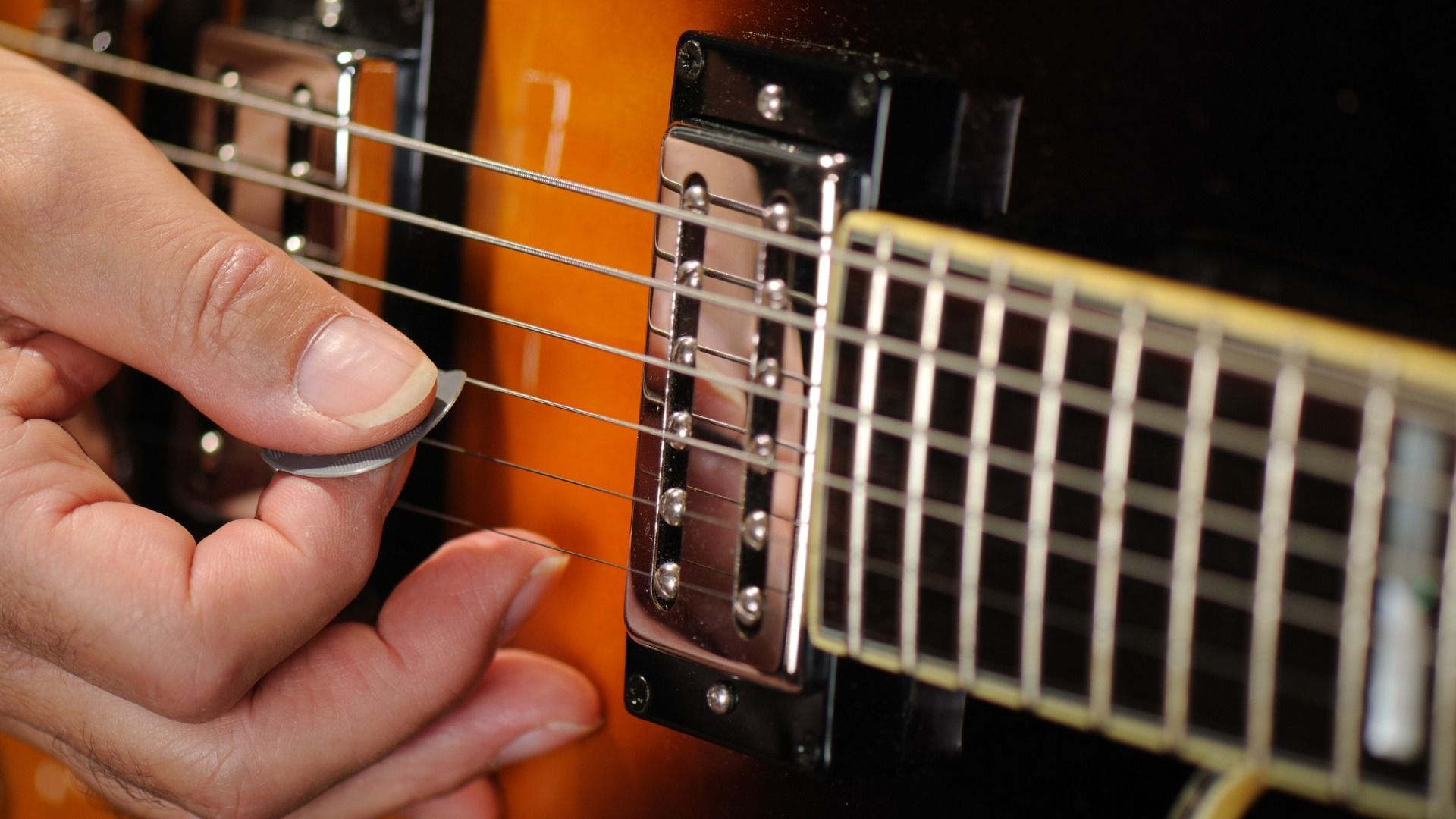Home>Instruments>Guitar>How To Hold A Classical Guitar
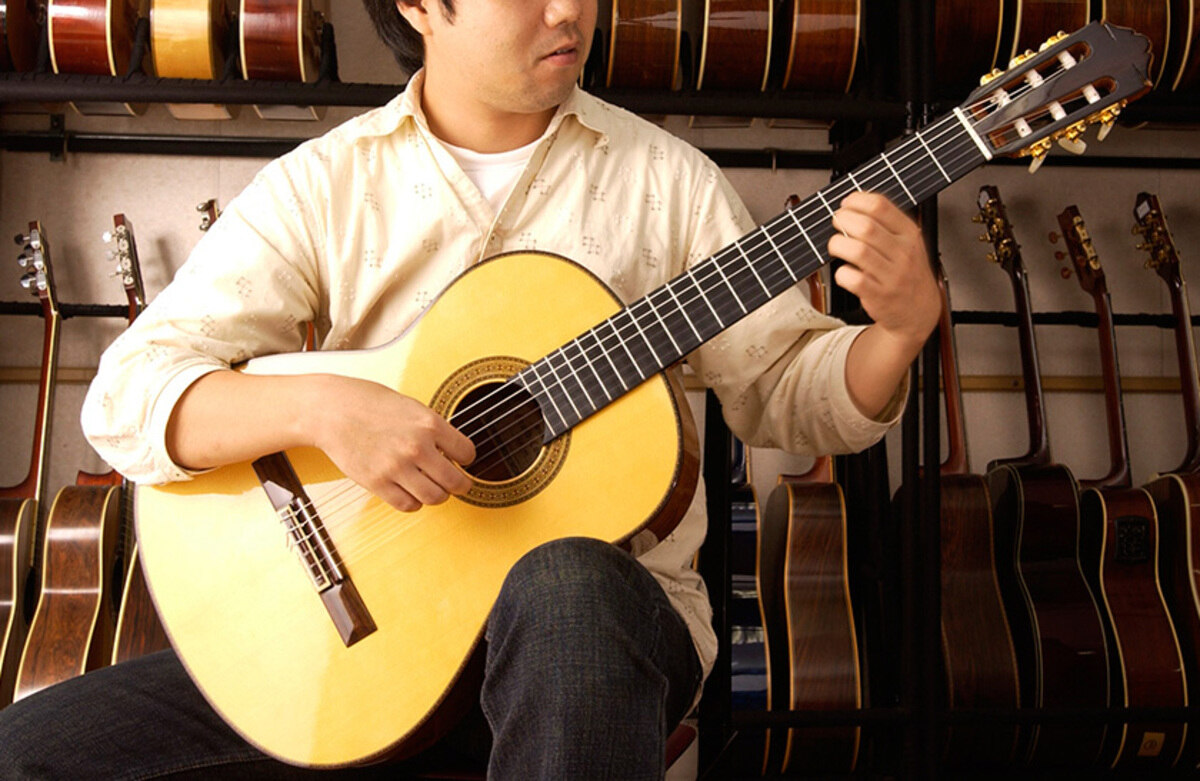

Guitar
How To Hold A Classical Guitar
Published: February 13, 2024
Learn how to properly hold a classical guitar to improve your playing technique. Discover essential tips and techniques for holding a guitar.
(Many of the links in this article redirect to a specific reviewed product. Your purchase of these products through affiliate links helps to generate commission for AudioLover.com, at no extra cost. Learn more)
Table of Contents
Introduction
Understanding the Basics of Classical Guitar
The classical guitar is a timeless instrument with a rich history and a captivating sound. Whether you're a beginner or an experienced player, mastering the fundamentals of holding a classical guitar is essential for achieving optimal technique and producing beautiful music. In this comprehensive guide, we will delve into the art of holding a classical guitar with precision and comfort, allowing you to embark on your musical journey with confidence.
Playing the classical guitar is a deeply rewarding experience that requires a harmonious blend of skill, discipline, and passion. The way you hold the guitar sets the stage for your entire playing experience, influencing your posture, hand positioning, and ultimately, the quality of sound you produce. By understanding the proper techniques for holding a classical guitar, you can lay a solid foundation for your musical endeavors and enjoy the process of mastering this elegant instrument.
Throughout this guide, we will explore the intricacies of holding a classical guitar, from establishing the correct sitting position to positioning your fingers on the fretboard with finesse. Whether you aspire to strum soothing melodies or conquer complex classical compositions, honing your ability to hold the guitar effectively is a crucial step toward unlocking your full potential as a guitarist. Let's embark on this enlightening journey and unravel the art of holding a classical guitar with grace and proficiency.
Understanding the Basics of Classical Guitar
Before delving into the specifics of holding a classical guitar, it’s important to grasp the fundamental aspects of this timeless instrument. The classical guitar, often referred to as the “Spanish guitar,” is distinguished by its nylon strings, warm tonal characteristics, and versatile playing techniques. Unlike its steel-string counterparts, the classical guitar is renowned for its ability to produce rich, resonant tones and is a staple in various musical genres, including classical, flamenco, and Latin American music.
One of the defining features of the classical guitar is its wide, flat neck, which facilitates intricate fingerstyle playing and chord transitions. This design allows for greater precision and control over individual notes, making it a preferred choice for musicians who prioritize expressiveness and nuance in their playing. Additionally, the use of nylon strings contributes to the guitar’s distinctive sound, producing a mellower and more rounded tonal quality compared to steel strings.
Furthermore, the classical guitar’s timeless appeal lies in its versatility, accommodating a diverse repertoire that spans centuries of musical compositions. From the evocative works of classical guitar maestros like Francisco Tárrega and Fernando Sor to the fiery rhythms of flamenco, the classical guitar offers a boundless canvas for artistic expression.
Whether you’re drawn to the delicate arpeggios of classical music or the fiery strumming patterns of flamenco, the classical guitar beckons players to explore a wide spectrum of musical styles and techniques. It serves as a gateway to a world of emotive melodies, intricate harmonies, and rhythmic complexities, inviting musicians to embark on a captivating journey of sonic exploration.
By familiarizing yourself with the unique characteristics and expressive potential of the classical guitar, you can cultivate a deeper appreciation for its artistry and understand the significance of mastering the foundational elements, including the proper technique for holding the instrument. With this foundational knowledge in place, you are poised to embrace the intricacies of holding a classical guitar with confidence and enthusiasm.
Proper Sitting Position
Establishing the correct sitting position is paramount when learning to play the classical guitar. The way you sit not only influences your comfort and endurance during practice sessions but also affects your posture and overall playing technique. By adhering to proper sitting principles, you can minimize physical strain, optimize your playing posture, and lay the groundwork for a more enjoyable and sustainable musical journey.
When assuming the sitting position for classical guitar playing, it’s advisable to utilize a firm, armless chair with a flat seat. This type of chair promotes stability and helps maintain an upright posture, allowing for unrestricted movement and facilitating proper weight distribution. Avoid chairs with arms, as they can impede the positioning of the guitar and hinder your freedom of movement.
Position the chair so that your feet rest flat on the floor, creating a stable foundation for your body. Your back should remain straight, and your shoulders should be relaxed, avoiding any unnecessary tension. Maintaining a balanced and relaxed posture is essential for preventing muscle strain and promoting long-term comfort while playing the guitar.
Next, place the guitar on your dominant leg, typically the left leg for right-handed players and the right leg for left-handed players. The guitar’s lower bout should rest against your upper thigh, and the neck of the guitar should be angled slightly upward, allowing for easy access to the fretboard. This positioning promotes optimal reach and visibility of the fretting hand, enabling smoother transitions between chords and facilitating precise finger placement.
As you settle into the sitting position, ensure that the guitar is centered and stable, with the body of the instrument aligned parallel to your torso. This alignment promotes a natural and ergonomic playing posture, minimizing strain on your arms and wrists while promoting fluid movement across the fretboard.
By adhering to these fundamental principles of proper sitting position, you can create an ergonomic and supportive environment for honing your classical guitar skills. Embracing a balanced and relaxed posture not only enhances your playing comfort but also fosters a conducive environment for refining your technique and musical expression. With the foundation of proper sitting position in place, you are ready to embark on the next step of holding the classical guitar with confidence and ease.
Holding the Guitar
Mastering the art of holding a classical guitar is a crucial step in developing a strong and confident playing technique. The way you hold the guitar directly influences your ability to navigate the fretboard, execute chord shapes, and maintain a consistent playing posture. By understanding the principles of proper guitar positioning, you can cultivate a foundation for fluid and intuitive playing, setting the stage for musical growth and proficiency.
As you position the guitar on your dominant leg, ensure that the instrument rests snugly against your body, creating a stable and secure foundation for playing. The curve of the guitar’s lower bout should align with your upper thigh, allowing for a comfortable and balanced posture. This positioning facilitates optimal access to the entire fretboard, enabling seamless transitions between chords and facilitating precise finger placement.
When holding the guitar, strive to maintain a relaxed yet supportive posture, avoiding unnecessary tension in your arms and shoulders. Embrace a natural curvature in your back, allowing for unrestricted movement and promoting a balanced distribution of weight. By cultivating a relaxed and poised stance, you can minimize physical strain and enhance your playing endurance, laying the groundwork for sustained musical enjoyment.
Additionally, it’s essential to find a balance between stability and flexibility when holding the guitar. While the instrument should rest securely against your body, be mindful of allowing for freedom of movement and unhindered access to the fretboard. Strive to strike a harmonious balance between stability and mobility, empowering you to navigate the guitar with ease and confidence.
Furthermore, pay attention to the positioning of your strumming or picking hand, ensuring that it can move freely across the soundhole and strings without encountering any obstructions. Maintaining an unobstructed range of motion for your strumming or picking hand is vital for executing precise and dynamic playing techniques, allowing you to fully express your musical ideas with clarity and finesse.
By embracing the principles of balanced posture, stability, and unrestricted movement, you can cultivate a harmonious and ergonomic approach to holding the classical guitar. This foundational skill forms the cornerstone of your playing technique, empowering you to explore the instrument’s expressive potential with confidence and artistry.
Placing the Fingers on the Fretboard
As you embark on your journey of mastering the classical guitar, the placement of your fingers on the fretboard plays a pivotal role in shaping your playing technique and musical expression. Achieving dexterity, precision, and fluidity in fretting hand movements is essential for navigating chords, executing melodic passages, and articulating musical phrases with clarity and finesse. By understanding the principles of finger placement on the fretboard, you can cultivate a nuanced and confident approach to playing the classical guitar.
When positioning your fretting hand on the guitar neck, aim to maintain a relaxed yet controlled posture, allowing your fingers to arch naturally over the frets. Avoid excessive tension in your hand and fingers, as this can impede dexterity and inhibit smooth transitions between notes and chords. By cultivating a relaxed and agile hand posture, you can optimize your finger movements and enhance your playing agility.
Begin by familiarizing yourself with the basic finger numbering system commonly used in classical guitar instruction. The index finger is designated as “1,” the middle finger as “2,” the ring finger as “3,” and the little finger as “4.” This numbering system forms the foundation for understanding and executing fretting hand techniques, providing a standardized framework for navigating the fretboard with precision and consistency.
As you position your fingers to fret individual notes or chords, strive to place them close to the front edge of the frets, exerting just enough pressure to produce clear and resonant tones. Avoid pressing too hard, as this can lead to unnecessary strain and may cause the notes to sound sharp or distorted. Cultivate a delicate touch that allows for optimal string contact without exerting excessive force, promoting a balanced and expressive sound.
Furthermore, pay attention to the placement of your fingertips on the strings, aiming to position them just behind the frets to minimize string buzz and ensure clean articulation. By honing your finger placement technique, you can produce articulate and vibrant tones, unlocking the full sonic potential of the classical guitar and infusing your playing with depth and clarity.
By embracing the principles of relaxed hand posture, precise finger placement, and delicate touch, you can embark on a journey of fretting hand mastery, unlocking a world of expressive possibilities on the classical guitar. With dedicated practice and attention to detail, you can refine your finger placement technique, enriching your musical interpretations and fostering a deeper connection with the instrument.
Conclusion
Embarking on the journey of holding a classical guitar encompasses a rich tapestry of artistry, technique, and musical expression. By understanding the fundamentals of proper sitting position, guitar holding, and finger placement on the fretboard, you have laid a solid foundation for cultivating a harmonious and intuitive approach to playing this timeless instrument.
Mastering the art of holding a classical guitar extends beyond physical technique; it is a gateway to discovering your unique voice as a musician. The way you hold the guitar shapes your playing posture, influences your fretting hand movements, and ultimately, defines your musical identity. Embrace the process of refining your guitar holding technique as a journey of self-discovery, allowing your passion and creativity to resonate through each note and chord.
As you continue to hone your skills and explore the expressive potential of the classical guitar, remember that patience, dedication, and mindful practice are your steadfast companions. Embrace each practice session as an opportunity for growth and self-expression, allowing the art of holding the guitar to become an extension of your musical narrative.
With a deepened understanding of proper sitting position, guitar holding, and finger placement on the fretboard, you are poised to embark on a fulfilling and enriching musical odyssey. Whether you aspire to serenade audiences with classical masterpieces, explore the rhythmic intricacies of flamenco, or compose your own evocative melodies, the art of holding a classical guitar will serve as your steadfast companion on this musical voyage.
May your musical endeavors be imbued with passion, creativity, and a profound connection to the timeless art of the classical guitar. As you continue to refine your technique and nurture your artistic vision, may the melodies that emanate from your instrument resonate with authenticity and heartfelt emotion, enriching the world with the timeless allure of classical guitar music.

